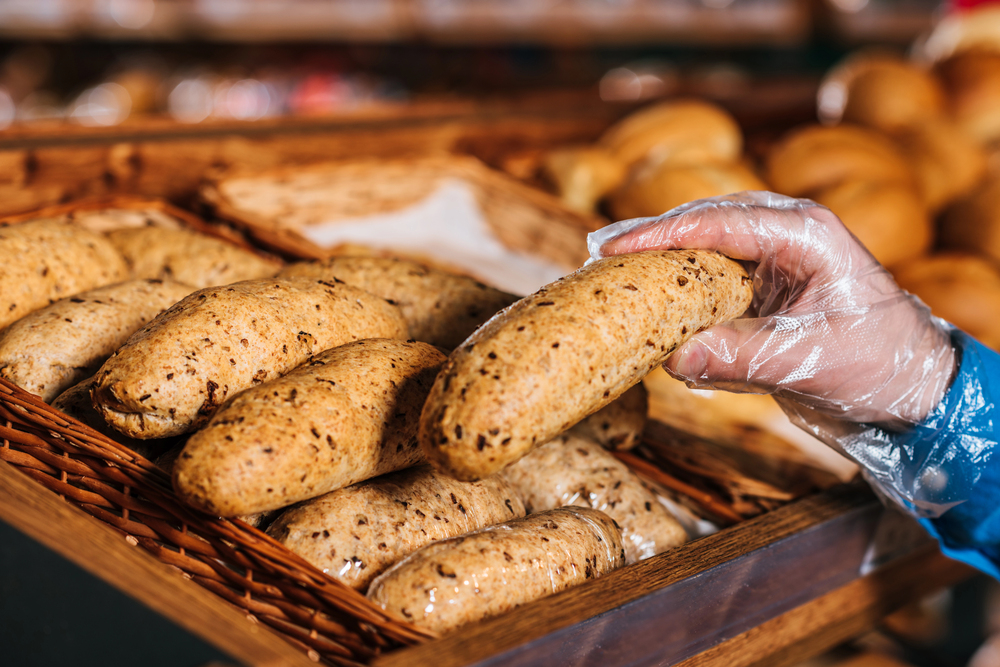Food contact surfaces are some of the most important material we use in the food and beverage manufacturing industry. We can’t eat our food without the right tools to prepare and serve them. As a matter of fact, food contact surfaces are one of the most vital parts when it comes to safety towards food.
That is why there are so many regulations around this product. As an example, our non-toxic and antimicrobial laminated medical grade printed tape has been made with food safe materials so it could be used as a food contact surface.

Image resource Depositphotos
Durable and easy to clean
Food contact surfaces must be durable and easy to clean. The durability of a surface is usually determined by the material it is made from. For example, stainless steel is a durable material that can be cleaned with hot water and detergent. Food contact surfaces that are not made of stainless steel may not last as long or may require special cleaners.
Food contact surfaces should be easy to clean because this will help keep them safe from contamination. For example, if you have a wooden cutting board, you should make sure that it has a plastic cutting board cover so that it doesn’t have bacteria growing on its surface.
In Compliance with Applicable Regulation and Does not Surpass Migration Limits
Migration in the context of food safe contact materials (FCMs) stands for the chemical level or metric to which the potential hazardous substances may transfer from the materials that come into contact directly with the food to food itself.
Safe food contact materials and standards can apply to a wide range of items such as containers for transporting food, processing and packaging machinery used in production, for example, the equipment by ELITER Packaging Machinery, packaging materials, kitchenware, and tableware, to which a migration test will be caried out to evaluate the chemical migration with regard to temperature effects, duration of contacts, age of material and so forth. In terms of compliance, should the food contact surface or material be officially admited as safe, it must pass the regulations including FDA or Regulation (EC) No 1935/2004, which are the most important standards listed by the United States and European Commission.
Nontoxic
Food contact surfaces must be nontoxic, clean and sanitary, and manufactured from materials that are safe for human consumption. Nontoxic: Food contact surfaces must not contain substances that can cause food borne illness. In the case of plastic or rubber materials, this means that they cannot contain any substances that are known to be toxic to humans or other animals. Inorganic materials such as glass and ceramic also meet this requirement.
Food contact surfaces must be cleaned and sanitized regularly to keep them safe for use with food products. A written cleaning schedule is required to ensure that the facility is properly maintained at all times.
Manufactured from Materials That Are Safe for Human Consumption: All food contact surfaces must meet FDA standards for safety when used with food products. This includes materials such as plastic, rubber, glass and ceramic items that are designed specifically for use with food products.
Free of chips, cracks, and pits
Food contact surfaces must be clean and without cracks, chips, or pits. Food comes in contact with these surfaces during the process of manufacturing and packaging. These surfaces may become contaminated with microorganisms that can cause foodborne illness.
- Free of chips, cracks, and pits
Food contact surfaces must be free of chips, cracks, or pits. Any imperfections in a food contact surface can harbor bacteria that can contaminate food products.
- Smooth surface texture
Food contact surfaces should have a smooth surface texture to reduce the risk of contamination by bacteria or mold growth. A rough texture can trap dirt and debris, which could harbor harmful bacteria in small crevices where it might not be visible to the naked eye.
- Nonporous material
It’s important for food contact surfaces to be made from nonporous materials like plastic or glass so that they don’t absorb any contaminants from the air around them or from other items in the facility that come into contact with them such as utensils, equipment, etc.”
It should be your dedicated cutting board for raw meat, poultry and seafood
The food you’re preparing is a source of many bacteria. If you cut that food on the same board you use to prepare foods that don’t need to be cooked, then you’re at risk for cross-contamination. The best cutting boards are made from wood or plastic.
If you have a wood cutting board in your kitchen, make sure it’s dedicated to raw meat, poultry and seafood. This will help prevent cross-contamination with other foods in your kitchen. When you’re ready to cut up a steak or chop some chicken, it’s important to use a dedicated cutting board.
Your cutting board should be used only for raw meat, poultry, seafood and fish. Choose a cutting board made from plastic or wood that is at least 3/4-inch thick. This will help prevent warping and cracking that can occur with thinner boards. Make sure the surface is smooth and doesn’t have any cracks or grooves where bacteria could grow.
Make sure you clean your cutting board after each use by washing it with hot soapy water and then rinsing it well with fresh water. Don’t put your cutting board in the dishwasher; this can cause warping and damage to the surface of the board. Also avoid using abrasive cleaners or steel wool pads as they could scratch or dull the surface of your cutting board.
All foods that could come in contact with surfaces where bacteria are likely to grow must be cooked thoroughly
Food that is cooked should be stored at a temperature of 140 degrees or lower. Foods that are not cooked, such as meat, poultry and seafood, should be stored at a temperature of 40 degrees or lower. This can be accomplished by placing them in the refrigerator or freezer. Foods should not be left out for longer than two hours. The refrigerator should be cleaned on a regular basis to remove any bacteria that may have built up on its surfaces.
Conclusion
Food contact surfaces are those surfaces where food comes in direct contact. Food contact surfaces can be porous or nonporous; the primary concern, however, is that these surfaces are smooth. The FDA would like to ensure that there is no risk of food contamination from food contact surfaces. In addition to the three characteristics listed above, it is important for contact surfaces to be smooth so that food does not stick or get caught in a grooved surface. This helps prevent contaminants from entering the food.



 Bitcoin
Bitcoin  Ethereum
Ethereum  Tether
Tether  XRP
XRP  Solana
Solana  USDC
USDC  Cardano
Cardano  TRON
TRON  Lido Staked Ether
Lido Staked Ether  Avalanche
Avalanche  Toncoin
Toncoin